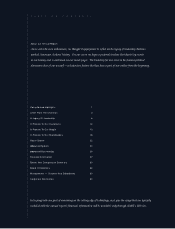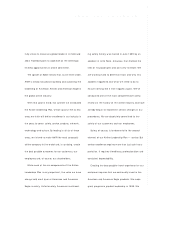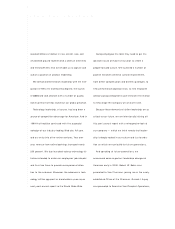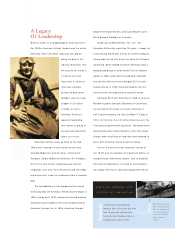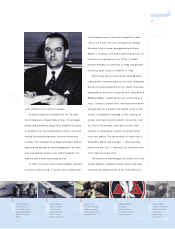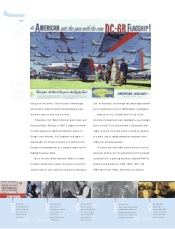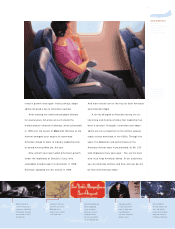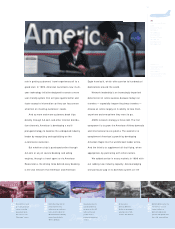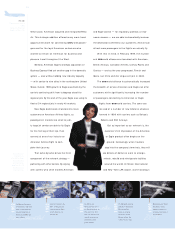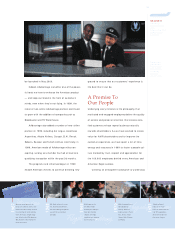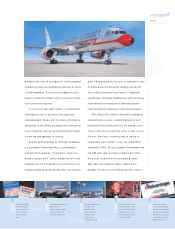American Airlines 1999 Annual Report Download - page 12
Download and view the complete annual report
Please find page 12 of the 1999 American Airlines annual report below. You can navigate through the pages in the report by either clicking on the pages listed below, or by using the keyword search tool below to find specific information within the annual report.
A Promise To
Our Customers
The history of American Airlines has been marked by a
long list of innovations. From the industry’s first non-
stop transcontinental flights to the invention of Super
SAAver fares to the creation of AAdvantage to the
deployment of onboard defibrillators, American has
always strived to make the American Airlines customer
experience second to none.
But just as important as those innovations has
been the reputa-
tion American has
earned for deliver-
ing consistent, effi-
cient, reliable,
friendly, and pro-
fessional service.
To our customers, the name American Airlines has,
over the years, come to represent a promise.
Regrettably, on far too many occasions in 1999,
American did not deliver on that promise.
One of the most fundamental aspects of quality
airline service is on-time performance. After finishing
in first place among the six major airlines (American,
United, Delta, Continental, Northwest, and US
Airways) in 1998, American’s year got off to a
disastrous start due to a labor disagreement that
disrupted operations in February. The deterioration of
American’s on-time performance (and, not surprisingly,
a surge in customer complaints) continued through
the spring and into the early summer months as the
rocky introduction of new air-traffic control computers
caused widespread delays and cancellations.
In June, American launched an aggressive initiative
to improve its on-time performance — through adjust-
ments to scheduling, staffing, and many other areas of
the airline. That initiative reaped dividends. After bring-
ing up the industry rear for several consecutive months,
American’s on-time ranking was significantly improved
through the latter part of 1999.
If there is a silver lining to American’s disappoint-
ing performance, it can be found in a renewed com-
mitment to rebuild customer trust, to restore the
confidence of our customers and to regain the
mantle of the service leader in the airline industry.
Indeed, American and American Eagle are
endeavoring to improve the experiences of every
customer — from the moment they pick up a phone
or log on to AA.com to make a reservation, until the
end of their journey.
American’s Reservations organization, often the
first point of customer contact, plays an important
10
A300-600
Manufacturer: Airbus
Industrie (France)
Number in Fleet: 35
Number of Seats:
192/266/267
1942
1943
1944
1945
1946
Many employees return
as the war ends, including
Maj. Gen. C.R. Smith,
who succeeds wartime
airline president
Alexander “ Ned” Kemp.
A converted DC-3
inaugurates the first
scheduled domestic
cargo service, carrying
war materials and
civilian fashions from
New York to Los Angeles.
In a mission labeled
“ Project 7A,” American
crews fly “ the Hump” over
the Himalayas to supply
Allied forces in China
and help train military
transport pilots.
A year after it began
its first international
service to Toronto,
Canada, American
starts flying south to
Mexico City and
Monterrey.
To meet the require-
ments of a growing
postwar fleet,
American opens a
new maintenance
base and training
center in Tulsa,
Oklahoma.
Expanded first -
class cabins offer
more premium
space and upgrade
opportunities for
the frequent
business traveler.


